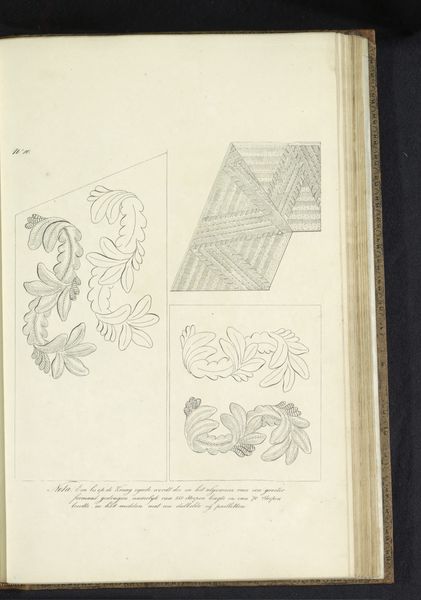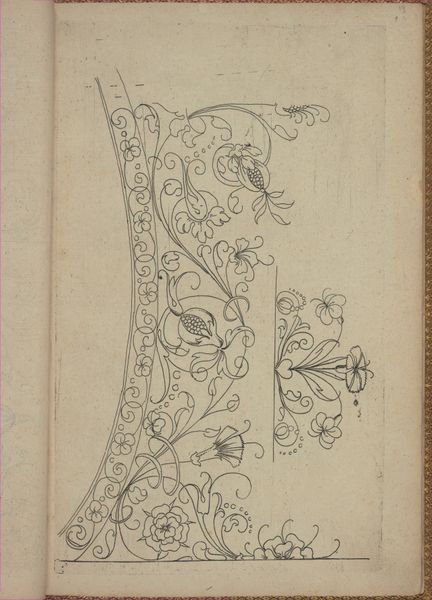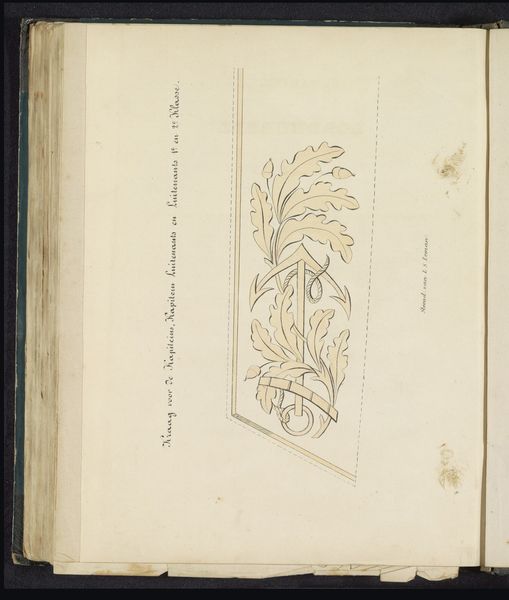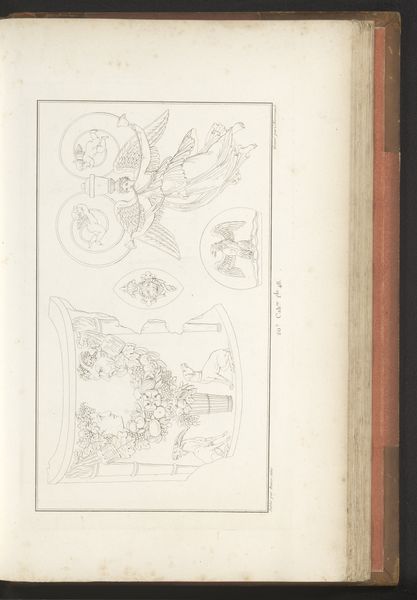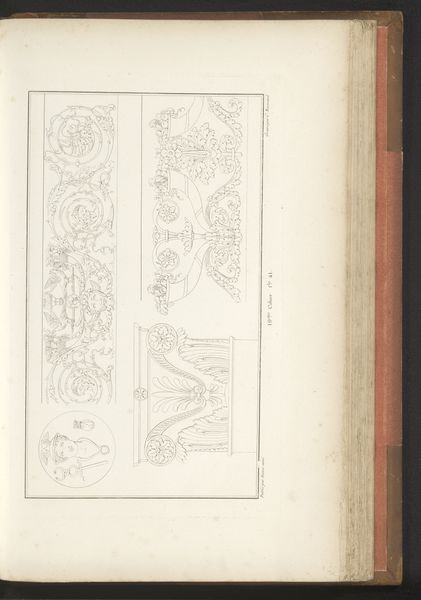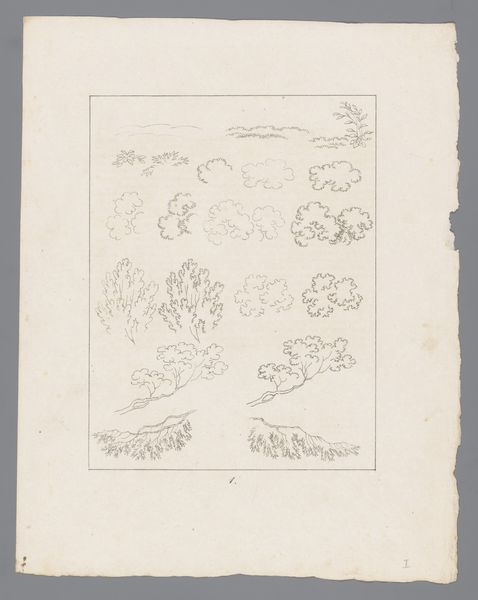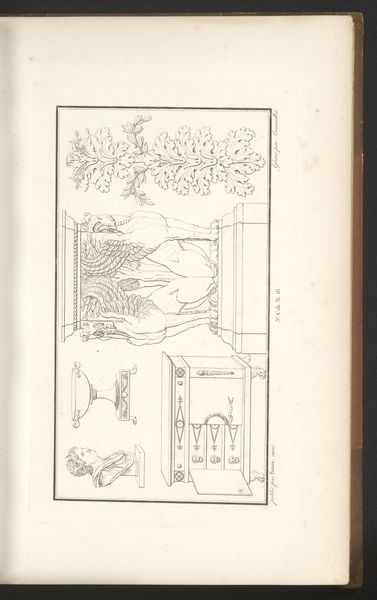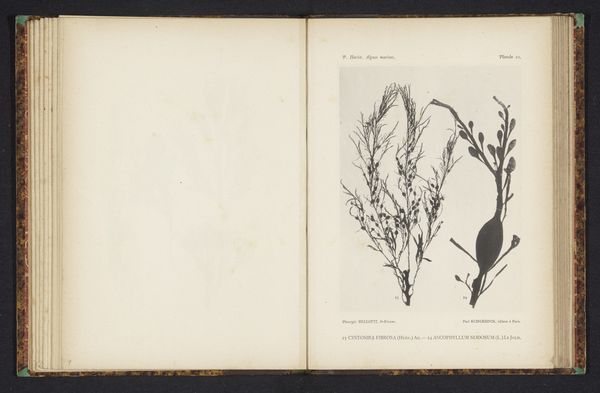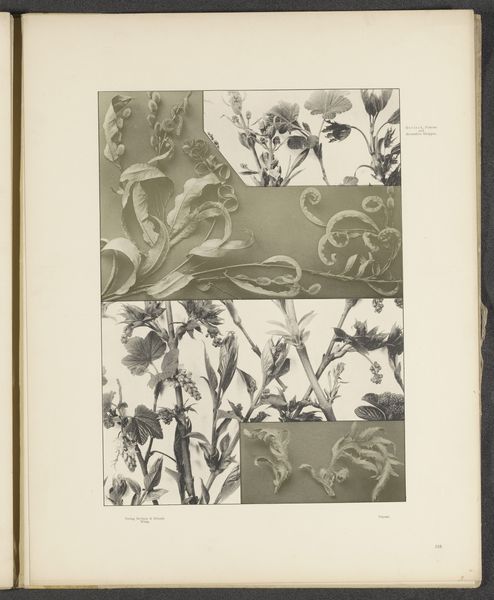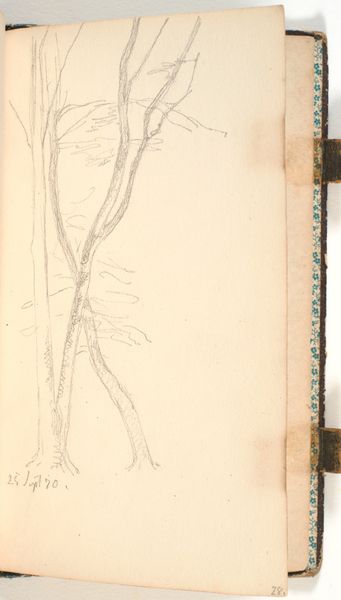
#
aged paper
#
pen sketch
#
sketch book
#
hand drawn type
#
personal sketchbook
#
hand-drawn typeface
#
pen-ink sketch
#
pen work
#
sketchbook drawing
#
sketchbook art
Dimensions: height 300 mm, width 205 mm
Copyright: Rijks Museum: Open Domain
Editor: Here we have "Borduursels der uniform van de Officieren der Militaire Administratie," or "Embroidery of the Uniform of Officers of the Military Administration," dating back to 1823. It's an anonymous work, a pen sketch within what appears to be a sketchbook. The delicacy of the pen work really strikes me; it's so intricate. How do you interpret the significance of these embroidery designs, especially considering the social and political context of the time? Curator: This sketchbook page offers a glimpse into the visual language of power in the 19th century. Uniforms, and particularly their embroidery, served as potent symbols of status and authority within the military and, by extension, the broader social hierarchy. Who wore these uniforms, and what messages were they intended to convey? Editor: I guess they were trying to signal prestige and perhaps even invincibility. Is there something about the choice of foliate ornamentation to be interpreted in the broader historical discourse? Curator: Exactly. Think about the socio-political forces at play. The design choices -- oak leaves and laurel wreaths for instance -- often carry loaded signifiers drawn from classical or nationalistic traditions. The designs evoke ideas of strength, victory, and perhaps even a connection to the land, reinforcing the military's perceived role as protectors of the nation. Considering these books would often have commissioners, does the military context enhance or hinder accessibility of this work? Editor: It certainly raises the question of who had access to such visual representations and how they were intended to perceive the military. Thank you, it's given me much food for thought. Curator: The pleasure is all mine, understanding this piece reminds us to look beyond the aesthetic to the social and cultural power dynamics encoded within even the seemingly innocuous details of design.
Comments
No comments
Be the first to comment and join the conversation on the ultimate creative platform.
